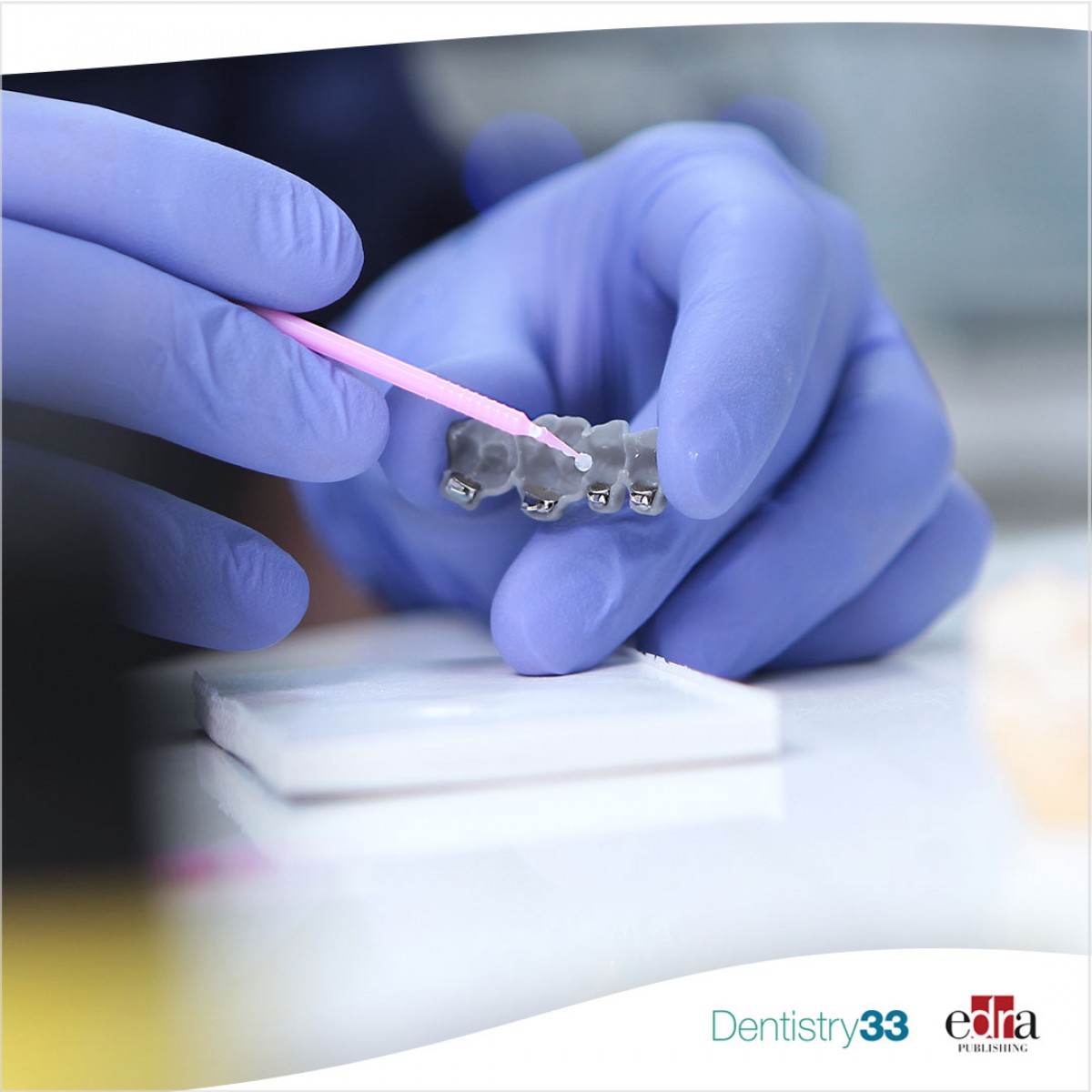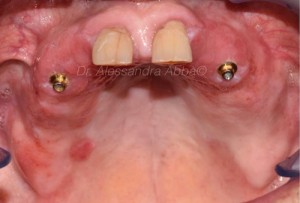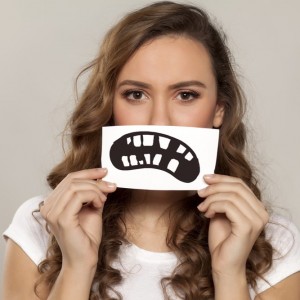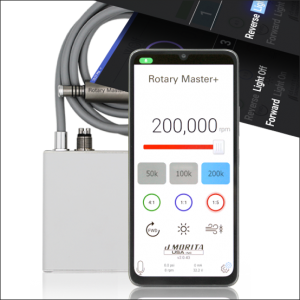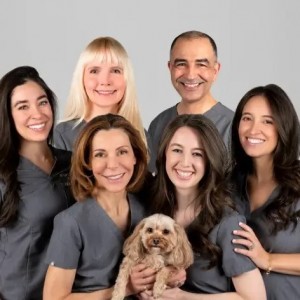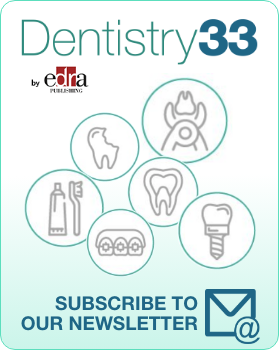
Denture adhesives with silver nanoparticles effective against Candida albicans
Compound also reduces denture stomatitis: study
Lara Figini
Rehabilitation with removable dentures is considered the cheapest and most common treatment for restoring oral function in edentulous patients.
Well-fitting and correctly positioned removable full dentures have a positive impact on both functional and psychological aspects, well-being and quality of life of patients. However, the conditions for guaranteeing the stability of mobile prostheses, retention and adequate comfort do not always exist, leading dentists to prescribe adhesives for prosthesis wearers.
Denture adhesives can also provide reassurance and comfort to the patient, particularly during public interaction occasions. They can improve chewing quality, reduce food debris build-up under the denture and offer a cushioning effect by decreasing pressure and friction transmitted by the prosthesis to the underlying mucosa.
Furthermore, denture adhesives can have an antimicrobial activity thanks to components such as hexachlorophene, ethanol and methyl salicylate. These antimicrobial agents have demonstrated limited action against Candida albicans, a microorganism strongly associated with denture stomatitis.
Materials and methods
In a study published in April 2023 in the Journal of Dentistry, the authors evaluated the antimicrobial potential of silver nanoparticles (Ag NPs) synthesized by three methods, incorporated into denture powder adhesive (Corega).
Samples of heat cured acrylic resin were treated with several types of Ag NP associated with the adhesive according to the following groups
- Group 1, adhesive + UV Ag, or ultraviolet method, where the silver nanoparticles were obtained by the UV ultraviolet light method. The Ag NPs were obtained from a mixture of the reducing agent, sodium citrate solution (10 mM) and silver nitrate (AgNO3 - 4 mM) at 23°C under magnetic stirring. The resulting solution was exposed to UV radiation for 30 minutes until the formation of Ag NPs.
- Group 2, adhesive + Ag Turk, or Turkevich method. 50 mL of AgNO3 solution (4 mM) was initially heated to 80 °C and then 6 mL of the reducing agent sodium citrate (10 mM) was added dropwise under magnetic stirring. The hue of the solution changed from colorless to light golden, which indicates the formation of Ag NPs. Heating was stopped and the solution was allowed to cool naturally to 23°C.
- Group 3, adhesive + Ag Gm, or chemical method, green using glycine extract (Glycine max extract). Initially, 30 mg of the reducing agent G. max extract was dissolved in 10 mL of distilled water. After complete dissolution of the extract, 50 mL of AgNO3 (4 mM) was added at 23°C while mixing under magnetic conditions. The resulting solution was then exposed to radiation from a 367 nm LED lamp for 60 minutes to accelerate the formation of Ag NPs.
- Control groups: the samples were treated with a combination of adhesive and nystatin (AD + Nyst group), adhesive only (AD group) or adhesive immersed in the surface of the samples in resin (PBS group). After the treatments, C. albicans biofilms were applied for 3, 6 and 12 hours on the surfaces of the samples. Biofilm was quantified using colony forming units per milliliter, colorimetric analysis, and laser scanning confocal microscopy.
Results
The results of this study revealed an inhibition of the fungal load and a reduction of the metabolic activity and of the biofilm mass in the resin samples treated with the AD/Ag NP combinations, compared to the AD and control groups. PBS extension. The antimicrobial action of the AD + Turk and AD + Ag Gm groups was similar to that of the AD + Nyst group in all periods and for all variables evaluated except for the biofilm mass (12 h).
Conclusions
From the data of this study, researchers concluded that denture adhesive containing silver nanoparticles Ag NPs (mainly those synthesized using Turkevich and Glycine max methods) show excellent antimicrobial activity against biofilm of C. albicans, antimicrobial activity that lasts up to 12 hours.
The association of Ag NPs to the adhesive can add preventive or therapeutic effects against denture stomatitis to this prosthetic material.
For more information: "Silver nanoparticles in denture adhesive: An antimicrobial approach against Candida albicans."
 Tag
Tag
 Related articles
Related articles
Denture stomatitis is an oral inflammation commonly affecting denture wearers. It is mostly observed on the palatal mucosa, accompanied by erythema, mucous membrane inflammation and sometimes pain or...
Dr. William Nudera, author of “NuEndo: rethinking endodontics,” by Edra Publishing spoke with Dentistry33 at the American Association of Endodontists 2023 annual meeting in Chicago. In the...
 Read more
Read more
Oral pathology 25 November 2025
Virtual microscopy (VM) is a technology for showing microscope slides using computers and could be considered a progression of classic methodology using optical microscopes.
For every assist this season, the insurance provider will donate $25 to TUSDM Cares for Veterans
Products 25 November 2025
J. MORITA USA, a world leader in handpiece technology, has announced the Rotary Master+ Electric Motor. Compatible with Morita TorqTech electric attachments and most competing electric handpieces on...
News 25 November 2025
Let’s be honest: nothing kills the vibe quite like bad breath. However, while 85% of people prefer for someone to tell them if their breath needs some freshening up, only 15% are willing to break...
News 25 November 2025
Vitana Pediatric & Orthodontic Partners (Vitana), a dentist-led dental partnership organization (DPO) focused exclusively on elite pediatric dental and orthodontic practices with operations in...


